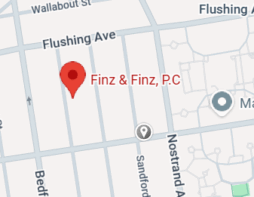New York City Fireworks Accident Lawyer
Fireworks Accidents and Injuries
Fireworks worldwide commemorate celebratory times. Fourth of July and New Year’s Eve parties, and other events like the Olympic ceremonies and nightly displays at Walt Disney World, use fireworks on special occasions and for religious and historical milestones. The result is spectacular when the fireworks fill the air with vibrant colors and shapes like rotating circles, stars, and tails. But every year thousands of people (often children and teenagers) are injured by the misuse of fireworks, both commercial-grade fireworks and consumer-grade fireworks.
History of Fireworks
Fireworks were invented in 7th Century China and were traditionally used to promote and celebrate the Chinese culture for marriage, honorary celebrations, and entertainment, much as they are used today. With its continuance of culture and tradition, China still manufactures and exports more fireworks than any other country in the world. In the United States, the earliest known celebration using fireworks was Independence Day in 1777. Fireworks were later used at George Washington’s inauguration in 1789. Fireworks fall into two categories based on their use: “on-the-ground” fireworks and “aerial” fireworks that are shot into the air with a propulsion device. The effect in both cases is the spectacular displays of fireworks that we have all come to know and love.
Fireworks: Dangers and Safety
According to the National Fire Protection Association over 9,600 people were treated in Unites States emergency rooms in 2011 due to fireworks-related injuries, and 34% of those injuries resulted in trauma to the head. Fireworks injuries are devastating, and the eyes are particularly vulnerable. Fireworks injuries can result in severe burns, amputation of fingers and toes, hearing or vision loss, loss of parts of the face, and brain damage.
Fireworks are divided into classifications according to their potential hazards and how they are transported by the Department of Transportation. These classes are:
- Class A: high explosives like dynamite and slurry explosives
- Class B: low explosives like professional display fireworks
- Class C: smaller fireworks for sale with the intended use by the general public
The use of consumer fireworks continues to be a highly-debated topic on a national level and within certain states due to injuries and accidents that occur when fireworks are used by non-professionals and those who are careless or under the influence. Many states have outlawed the use of consumer fireworks, leaving the best displays in the hands of professionals.
In June 2013, The Consumer Product Safety Commission issued its annual report involving data for fireworks mishaps for the year 2012. Further, the commission has issued guidelines regarding consumer fireworks sold in the United States and has made it their mission to be proactive in enforcing these guidelines to prevent further injuries, accidents, and deaths. Even though each state varies in what they allow and permit consumers to use, however, many illegal fireworks are sold on the black market leaving the regulation of these fireworks undetected. It is not uncommon for people to cross state lines to obtain fireworks if their use is restricted within a given state.
In a tragic accident in North Dakota, a man was decapitated after putting a bundle of fireworks in the middle of the street. The fireworks exploded and launched before the man had time to move away from the area. The fireworks he used were federally regulated, commercial-grade fireworks with a warning that said, “If found, please report to the U.S. Government.” Other users have had fireworks launch into their faces and explode in their hands. Curious children lean in to look at sparklers, which can contain a heat level as high as 1,800 degrees. Even those in the vicinity who are not taking part in the fireworks operations can be injured or killed from fireworks gone astray.
If you or someone you know insists on using consumer fireworks, they should be used only in states where fireworks are legalized and used keeping extreme caution in mind. Here are some basic tips for fireworks safety:
- Children should never be allowed to play with fireworks of any kind. When using sparklers, instruct children to keep them away from the face.
- Fireworks should not be used by anyone who is intoxicated or impaired, regardless of the type of fireworks.
- Eye protection should always be worn.
- Never pick up or move close to a firework that was lit but failed to launch.
- Do not use fireworks in windy or dry conditions.
- Keep pets inside and away from areas where fireworks are being used. Many pets are injured from being stuck in fences or hit by cars when they try to run away from the noise.
- Make sure you have a bucket of water or hose nearby, or that a body of water is easily accessible.
Legal Assistance for Fireworks Accidents and Injuries in New York City
Recovering from a fireworks accident, injury, or death that you or a loved one has experienced can bring several legal factors to the forefront. Compensation may be due to medical treatment, lost wages, damages of pain and suffering, and other issues. The fireworks product could have been defective either in design, manufacturing, or marketing, and your claim could be a product defect case. Our New York City accident lawyers are renowned for assisting in product defect cases and personal injury cases. We invite you to take our free Case Evaluation to start the process. When you do so, we will confidentially and discretely assess your needs, and inform you of your legal options for your injury or accident. Finz & Finz, P.C., can be reached toll-free at (855) TOP-FIRM.



























